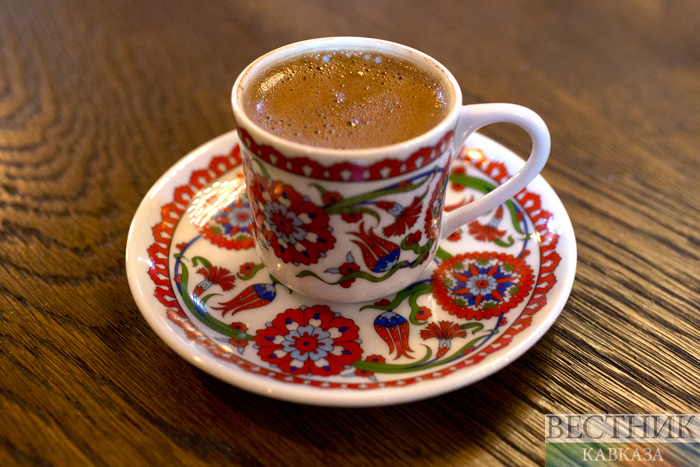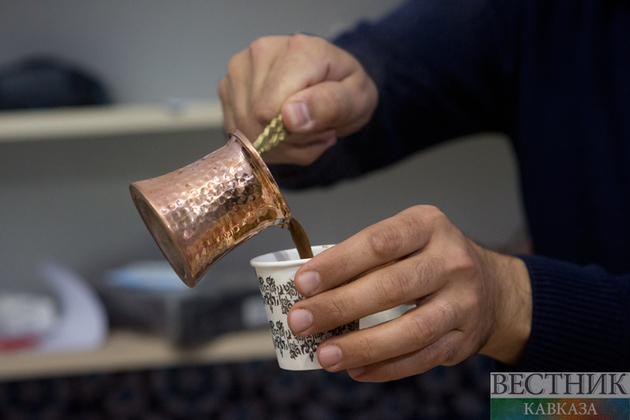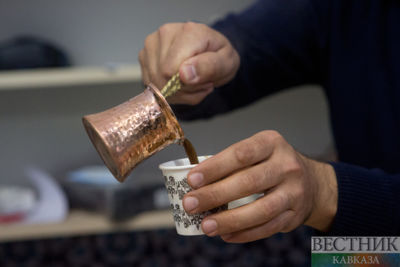From stirring up coffee house rebellions to supporting the Industrial Revolution, the popular caffeinated brew has fueled global change. History remembers six historical moments when coffee changed the world.
Coffee’s Globalization Helped Fuel Slavery
After spreading to the Near East, North Africa and the Mediterranean, the coffee trade reached Europe in the 17th century. As the drink grew in popularity, empires realized they could grow their own coffee using peasant and enslaved labor in their far-flung colonies. By the 18th century, English, Spanish, French, Portuguese and Dutch leaders had made coffee one of its top colonial cash crops, along with sugar, cotton and tobacco. From Indonesia to Latin America and the Caribbean, enslaved workers were forced to cultivate coffee on colonial plantations. The French Caribbean colony of St. Dominique grew two-thirds of the world’s coffee in the late 1700s until the island’s plantations were burned and owners were massacred during the Haitian Revolution in 1791. Using even more slave labor, the Portuguese stepped up aggressively to make Brazil the world’s largest coffee producer. Brazil, which brought the largest number of enslaved people to the New World and was the last country in the Western Hemisphere to abolish slavery in 1888, made coffee the heart of its economy, its banking system and its political and social structure. Faced with laws granting freedom to the offspring of slaves, a Brazilian member of Parliament opposing abolition declared in 1880, “Brazil is coffee, and coffee is the negro.”
Coffee Houses Helped Fuel Public Debate
Coffee houses first appeared in the Ottoman Empire, where practicing Muslims, who abstained from alcohol, had no need to gather in taverns. Over centuries and across the world, coffee houses became key to establishing what some philosophers call a “public sphere,” once dominated by elites, for a broader mix and class of people. As far back as the 16th century, the Ottoman Turks, who spread coffee throughout the Muslim world and later to Europe, tried to shut down coffee houses, only to face protests by pro-coffee mobs that forced them to reopen. Coffee houses were the only communal places where men could gather and discuss news, religion, politics and gossip away from the watchful eyes of religious or state authorities. In Europe, coffee house patrons planted the seeds for new ways to handle economies and shape politics. The London Stock Exchange, Lloyd’s of London and the East India Company were started in coffee houses, which in London came to be known as “penny universities” because the price of a cup often gave patrons access to ongoing intellectual debate. In colonial America, Boston’s Green Dragon Tavern and coffeehouse became famous as a place where leaders of the Sons of Liberty met to hatch the 1773 Boston Tea Party and foment their revolutionary ideas that led to America’s war for independence

Coffee's Kick Helped Fuel Industrialization
In 18th-century England, as the Industrial Revolution gained steam, workers in unrelenting new factories toiled day and night thanks to coffee. Or more precisely, the caffeine in it. Everyone from the Ottoman Turks to the 18th-century intellectuals of the Enlightenment realized that the stimulant in coffee boosted energy and heightened focus. For hard-driving manufacturing industries looking to keep factories running at all hours, coffee enabled them to turn workers’ natural sunlight-driven sleep and awake times to “clock time.” Workers who used to take breaks to eat five times a day could now keep things running with frequent coffee breaks instead, as the Industrial Revolution spread to other parts of Europe and to North America. “The drink of the aristocracy had become the necessary drug of the masses, and morning coffee replaced beer soup for breakfast,” wrote Mark Pendergrast in Uncommon Grounds: The History of Coffee and How It Transformed Our World.
Instant Coffee Helped Fuel World Wars
Instant coffee, made with quickly soluble coffee crystals that eliminated the drink’s traditionally lengthy brewing process, took off during World War I. That’s when American inventor George C.L. Washington found a way to scale production and sell to the military, to give soldiers’ combat rations a boost. “I am happy despite the rats, the rain, the mud, the draught (sic), the roar of the cannon and the scream of shells…,” an American soldier wrote from the trenches in 1918. “It only takes a minute to light my little oil heater and make some George Washington coffee.” In that war, soldiers called it “a cup of George.” In World War II, G.I.s called it a “cuppa Joe.” Once the U.S. entered the war in 1941, the Army ordered 140,000 bags of coffee beans a month, 10 times the previous year’s order, to make the instant brew. Officials rationed coffee for civilians for nine months so troops would have enough. After the war, several companies including Nescafe and Maxwell House advertised instant coffee heavily to war veterans, their families and the public who saw and sometimes sought to emulate a soldier’s love for the lower-quality brew. Once consumers experienced the drink’s convenience, its popularity grew.
In Latin America, Coffee Was Tied to Bloody Civil Wars
In Latin America after World War II, crushing rural poverty and widespread exploitation of laborers working to harvest coffee, bananas and other global commodities sparked regional pockets of communist activism. America, fearful of Soviet influence in its backyard during the Cold War and working to protect corporate financial interests, intervened in several Central American countries, supporting coups and escalating bloody civil wars. First came Guatemala’s U.S.-backed coup in 1954. That’s when the U.S. Central Intelligence Agency moved to topple democratically elected president Jacobo Árbenz Guzmán after he began giving more than 100 untilled coffee plantations to peasant cooperatives with the support of Guatemalan communists. Coup plotters installed right-wing president General Carlos Castillo Armas, who canceled agrarian reform, restored secret police and drove peasants off the land they’d been given. His assassination three years later led to three decades of repression and bloody violence by governmental death squads and guerrilla groups. The coffee elite kept their lands and status. Workers continued to suffer.
In the 1970s and ‘80s, similar conflicts evolved in neighboring Nicaragua and El Salvador. In the latter nation, a U.S.-backed military junta faced leftist rebels that sought to topple the government, which had close ties to coffee oligarchs and the elite. U.S.-trained right-wing death squads joined the civil war and clashes in the countryside left 50,000 people dead. Coffee exports, which comprised most of the country’s revenue, fell drastically. Close to a million people fled the country.

Starbucks Fueled the Return of the Coffee House
The ubiquitous Starbucks cafes where people work, lounge or meet friends may not have happened if Howard Schultz, a marketing executive for the company, known then as Washington state’s largest coffee bean roaster, had not caught a plane to Milan, Italy in 1983. There, he became enamored with the hundreds of cafés and espresso bars where baristas crafted lattes and cappuccinos while talking to waiting customers. Back home, he convinced Starbucks’ owners to let him open an espresso bar. He bought the six-store chain and roasting plant in 1987, vowing to open 125 store/cafés within five years. In 2020, Starbucks owned close to 9,000 stories and licensed another 6,500 in the United States—and boasted more than 30,000 stores around the globe. Starbucks succeeded not only in commoditizing fancy coffee, but in reinforcing the historical, five-century-long importance of the drink as a reason to gather, sip and connect
















